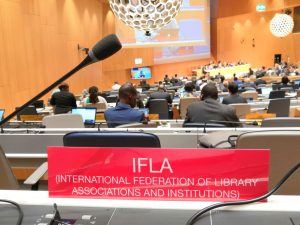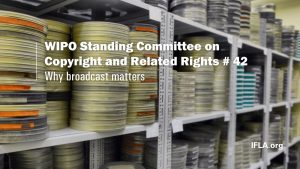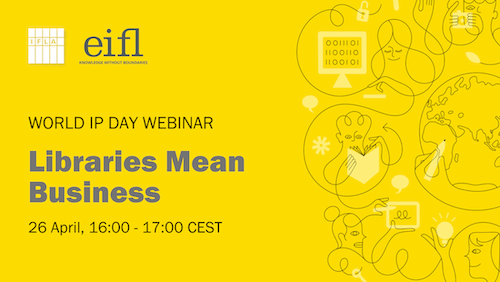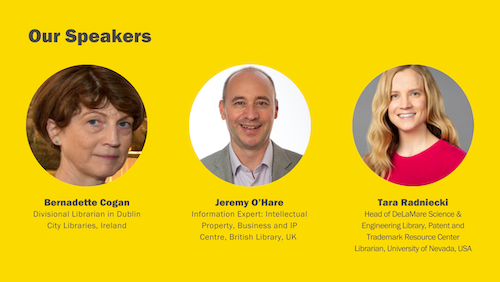When all you have is a hammer, everything looks like a nail.
This – the law of the instrument, or Maslov’s hammer – refers to a situation where someone’s actions are more determined by the tool that they have at hand than by consideration of what the best response might be.
The consequence is likely to be ill-suited solutions to problems faced, or even leaving things more broken than when they started. This can be the case at any level, from the individual to the governmental.
The response, of course, is to take the time, when facing an apparent challenge, to reflect first on which tool from a selection may be most effective.
How is this relevant to the work of the World Intellectual Property Organization?
Many of those engaged in discussions at WIPO, and in particular in its Standing Committee on Copyright and Related Rights (SCCR) spend their time focusing on creating, managing, or enforcing intellectual property rights.
When this is what you are used to, it is perhaps normal that, when you are faced with a new situation, the automatic response is to think about how you can create a new right.
Currently on the agenda of SCCR are new rights for broadcasters, theatre directors, authors (for public lending), and potentially though work on copyright in the digital environment, streaming.
This of course will make sense for anyone involved in managing rights. But are these all situations where more rights really represent the most effective way of achieving stated goals? What risk is there that they, in fact, end up doing more harm than good?
Maslov’s hammer at work: the proposed study on Public Lending Right
A first example of a drive to push new rights as a response to a challenge is the proposed study on public lending rights (PLR). This document, in summary, calls for an investigation of the benefits of PLR (disregarding potential costs), and effectively mandates work to set up a road map for rolling this out in developing countries.
IFLA of course has a strong position on PLR in developing countries, where libraries are often poorly funded, if at all, and the need to build literacy and reading culture is high. Yet at the same time, it is undeniable that many authors incomes that are barely, if at all, sufficient to support them in their work.
Therefore, before (uncritically) doing work in support of PLR, there is a case for avoiding the law of instruments, and thinking first about what tools are available, before then exploring which ones might work best.
For example, the European Union, in the Digital Single Market Directive, introduced both new provisions on fair remuneration, transparency around revenues, and the potential for rights to revert to authors after a period of time.
In Australia, The Author’s Interest has also underlined the potential of rights reversion as a way of empowering authors.
Meanwhile, the Racine Report in France set out 23 recommendations, highlighting the importance of direct and indirect support for authors, as well as social security. Importantly, it highlights imbalances in the relationship between authors on the one hand, and intermediaries and collecting societies on the other. Indeed, the report does not mention exceptions to copyright at all.
In short, this suggests that any sincere effort to address the incomes of authors – in particular in the case of developing countries where public resources are scarce – can draw on a wide variety of experiences. Simply looking at just one solution – without considering its merits in relation to others – offers a poor service to governments. And for authors themselves, the uncertain promise of PLR money may offer less of a support than more meaningful solutions to support incomes.
An open question: understanding the impact of COVID on the copyright sector
As hinted on the first day of SCCR, there is the possibility that WIPO will launch discussions on the topic of the impact of the pandemic on the copyright sector.
The question is a fair one, given the intensification of the shift to digital tools for sharing and accessing culture. There has, undoubtedly, been a huge impact on performing artists, hit by the closing of venues, as well as for bookshops.
In the meanwhile, those able to operate online have done a lot better. This includes not just streaming platforms, but also those able to sell physical goods such as books over the internet. Clearly, of course, platforms have benefitted in particular from higher numbers of users and so of data gathered.
This situation has accentuated questions about the division of revenues from such services, not least as concerns whether compensation from streaming and other uses on digital platforms is fair – the ‘value gap’. This is the same concern that underpinned the drive for Article 17 of the EU’s Directive on Copyright in the Digital Single Market.
How to address the challenges faced is a great example of an opportunity to think hard about the different tools available, rather than immediately reaching for new rights.
For example, the traditional means of addressing situations where one player is in a much stronger position in a negotiation than another is through competition law. It may also be possible to use contract law, especially in the case of individuals, which of course may also help ensure that authors receive a higher share of any revenues earned.
Fully considering these alternative options would make it easier to assess whether rights – which are likely to be best used by those with the resources to make the most of them – are the best response.
A clear case for action: cross-border exceptions
There is one situation at WIPO, however, where there is more clarity – the need for an international instrument to allow for cross-border cooperation for preservation, education and research.
Meetings held throughout 2019 explored various options for supporting these activities (see the report), but no credible alternatives to action emerged.
For example, while cross-border licensing is possible, there is no justification for obliging a user (or an institution supporting users like a library) to pay to do something across borders which they can do without compensation or permission at home.
Preservation is a perfect instance of this – a clear public interest activity for which few would argue for compensation domestically. Yet without an international instrument making clear the possibility to share works and copies – for example through preservation networks, or to allow for cloud storage of copies, there is no other solution giving legal clarity.
The same goes for core forms of access – for example to supply documents on an ad hoc basis, for text and data mining, or to support basic teaching activities. While more extensive uses may of course justify licensing solutions, minimal (or purely technical) ones do not.
Without a clear possibility to work across borders, learners, educators and researchers face uncertainty and frustration. This is an area where the other available tools have been reviewed, and the value of an international instrument is clear.
As argued in this blog, the law of the instrument provides a good analogy for an approach that sees new rights as a response to emerging challenges. While in some cases, they may be appropriate, in many cases they are not.
Indeed, the accumulation of new rights (i.e. offering someone a share of potential success, rather than simply offering those involved in the creation of a work a decent contract) causes significant challenges to those who need to clear them. While the work of collective management organisations does allow a simplification of the process, simpler still would be to seek alternatives which avoid this complexity in the first place.
In their work this week, we hope that delegates will break free of the law of the instrument, and be ready to consider the whole toolbox.



